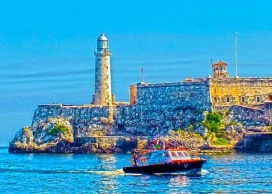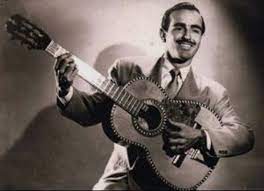
Havana ephemeris. June 12.
1893. Eliseo Grenet is born in Havana.

He was an outstanding composer and pianist. From the stage of his childhood he began to study piano. Already at the age of nine he premiered a musical magazine entitled Physical Geography at a school party and at thirteen he composed small works for the cinema. Later he began to work in a movie theater entertaining silent film batches. Over the years he participated in multiple tours of various countries in America and Europe. He returned to Cuba in 1931 and it was then that, after assessing the situation that the country was suffering in the presence of the dictatorship of Gerardo Machado, he decided to join his song to the struggle that the people were waging. In 1932 he created Cuban Lamento, which caused his expulsion from his homeland.
Eliseo Grenet also gave his contribution to the musicalization of several films and composed especially for different plays.
As a composer, he is specifically remembered for his work, Mamá Inés, which became a kind of symbol of Cuban identity. Precisely that creation was included in the play entitled Niña Rita o La Habana en 1830, which was premiered on September 29, 1927 in the old Regina theater with music by Ernesto Lecuona and Eliseo Grenet.
Eliseo Grenet had a relatively short life since he died when he was only 57 years old.
1957. The delivery of the building to the Board of Trustees is ordered, as well as the transfer of the National Library from the building located in the then Civic Plaza, later converted into the “José Martí” Revolution Square, it is one of the most notable in his time.

The "José Martí" National Library is the largest documentation center in Cuba and its main objectives are to acquire, process, treasure and disseminate the national bibliographic heritage and the most representative of universal culture, as well as to compile the current and retrospective national bibliography and specialized bibliographies and ensure and control compliance with current legislation regarding the nation's bibliographic wealth.
This center also has among its essential functions that of compiling union catalogues, working on the standardization of library science processes and especially in the bibliographic field, carrying out historical-cultural and library science research, and actively participating in the planning, organization and development of the single system of libraries and the national information system.
The National Library has also assumed the functions of the National Bibliographic Center and compiles and publishes the Cuban Bibliography.
The National Library also organizes complementary activities such as exhibitions, concerts, conferences both of a librarian nature and on topics related to culture in its different manifestations. He also carries out investigative work in the preparation of conferences, research reports and papers for national and international events.
1961. The National Hospital opens its doors in Havana.
It was the first installation of this type created by the Revolution in the Cuban capital.
In a single building, the hospital had a recovery room, a polyvalent and special intensive care room, a guard room with an emergency care room, admission rooms, an outpatient clinic for all medical and surgical specialties and a special service, true Maternal and Child Neonatology Hospital with a specialized laboratory. It also had all the specialties of diagnostic means.
The hospital is named after the Mexican cardiologist Enrique Cabrera, who in October 1962 joined to work there.
After his death, it was agreed that the hospital be identified with his name..
Currently, after a process of repair and renovation, the hospital has an Emergency and Urgent Care Center with all the services: Radiology, Imaging, Emergency Room, Clinical Laboratory and Microbiology, and high-tech equipment has been installed. An Ophthalmology Center and a Cytogenetics Laboratory were also inaugurated there.